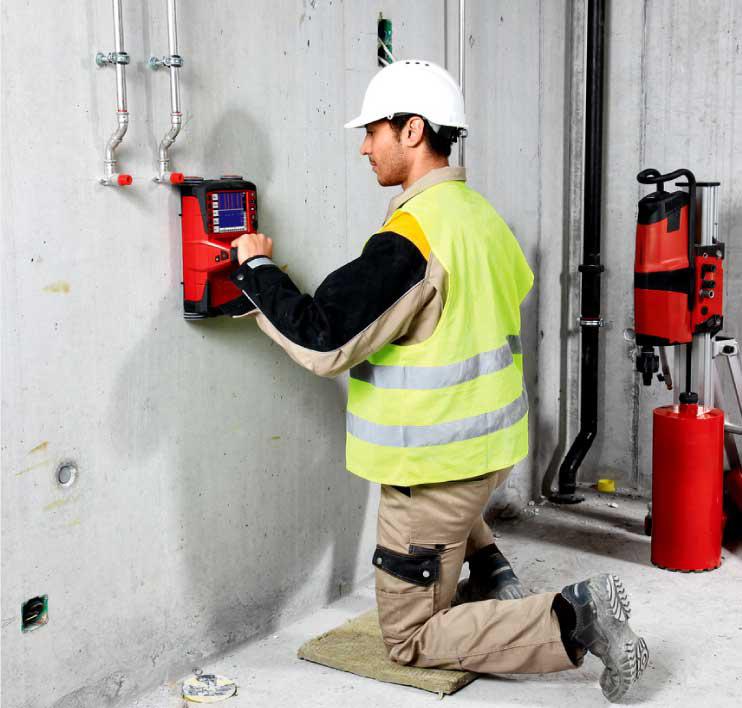Advanced RainierGPR Concrete Scanning Services Introduced
Advanced RainierGPR Concrete Scanning Services Introduced
Blog Article
Checking Out the Midst: A Comprehensive Overview to Concrete Scanning and Its Diverse Applications
In the realm of building and construction and facilities growth, the thorough procedure of concrete scanning holds a crucial duty in making certain the structural integrity and security of jobs. As modern technology continues to advance, the applications of concrete scanning have expanded far beyond mere surface-level analyses.
Relevance of Concrete Scanning
Recognizing the importance of concrete scanning is vital in guaranteeing the safety and security and integrity of structures during construction and improvement tasks. Concrete scanning uses innovative modern technologies such as ground-penetrating radar (GPR) and electro-magnetic induction to find embedded items, gaps, or various other anomalies within concrete frameworks.
Additionally, concrete scanning plays a critical function in ensuring conformity with building ordinance and policies that mandate the defense of existing architectural components throughout construction activities. By precisely mapping out the inner make-up of concrete, scanning technologies enable building and construction experts to make informed decisions that promote the structural security and toughness of structures and facilities projects. Fundamentally, the value of concrete scanning hinges on its capacity to guard both the structural stability and the workers involved in construction ventures.
Technologies Used in Concrete Scanning
Concrete scanning depends on sophisticated technologies such as ground-penetrating radar (GPR) and electromagnetic induction to accurately identify embedded items and abnormalities within concrete frameworks. Ground-penetrating radar runs by producing high-frequency electro-magnetic waves right into the concrete. When these waves come across various materials or voids within the concrete, they bounce back to the surface area, allowing the GPR system to produce a thorough subsurface photo. This innovation is specifically effective in locating rebar, post-tension cords, channels, and various other objects installed in concrete.
Electromagnetic induction, on the other hand, functions by generating magnetic fields around a concrete framework through a transmitter coil. When steel objects exist within the concrete, they interfere with these magnetic fields, causing eddy currents to move through the metal. By determining the modifications in the magnetic fields with a receiver coil, the system can pinpoint the place of metallic objects in the concrete.
These innovative innovations play a critical role in non-destructive testing, ensuring the safety and security and stability of concrete structures in different industries.
Applications in Building Market
Within the building sector, concrete scanning technology locates varied applications that improve task efficiency and safety and security. One essential application is the detection of rebar, post-tension cable televisions, and various other ingrained objects prior to drilling or cutting into concrete structures. By precisely mapping out these components, building teams can prevent expensive damages, make certain architectural stability, and protect against prospective security dangers. Furthermore, concrete scanning is made use of for locating voids, such as air pockets or locations of damage within concrete, which can jeopardize the general strength of a framework. By determining these gaps beforehand, building professionals can take needed actions to resolve them and preserve the toughness of the building. Furthermore, concrete scanning plays a crucial function in top quality control by validating the thickness of concrete covers over support, making sure compliance with style specifications and criteria. On the whole, the applications of concrete scanning in the building industry contribute significantly to enhancing job workflows, decreasing dangers, and delivering top quality outcomes.

Security Benefits of Concrete Scanning
In the world of building and construction safety, the application of concrete scanning modern technology presents an extremely important benefit in preemptively determining potential risks and fortifying architectural honesty. By using innovative scanning approaches such as ground-penetrating radar (GPR) and electromagnetic induction, construction teams can properly locate rebar, post-tension cords, channels, and other hidden objects within concrete structures. This positive strategy significantly minimizes the threat of unintentional strikes throughout drilling, cutting, or coring tasks, consequently preventing expensive damages, injuries, Visit Website and task delays.
Moreover, concrete scanning improves worker safety by offering real-time information regarding the architectural condition of concrete components. This data makes it possible for building professionals to assess the integrity of existing structures, determine deterioration or defects, and make informed decisions regarding repair service and maintenance procedures. By addressing potential security issues without delay, concrete scanning adds to developing a safe and secure workplace and alleviating the possibility of structural failures or accidents on construction websites. Eventually, the safety benefits of concrete scanning not only protect assets and lives yet additionally maintain market criteria for high quality and integrity.
Future Fads in Concrete Scanning
Arising advancements in scanning technology are poised to reinvent the area of concrete assessment and analysis. By using the power of AI, these systems can evaluate substantial quantities of information accumulated during scanning processes to supply more in-depth and exact insights into the problem of concrete frameworks.
An additional considerable trend is the advancement of even more mobile and easy to use scanning devices. Miniaturization of scanning equipment permits simpler accessibility to confined spaces and remote areas, making assessments extra efficient and thorough. Additionally, innovations in wireless interaction technologies allow real-time information transfer and analysis, facilitating quicker decision-making procedures.
Furthermore, there is a growing concentrate on sustainability site link in concrete scanning innovations - RainierGPR Concrete Scanning. Suppliers are increasingly including eco-friendly products and energy-efficient attributes right into their gadgets to decrease ecological effect. These future fads are set to enhance the effectiveness, accuracy, and sustainability of concrete scanning methods, shaping the industry's future landscape
Final Thought
In verdict, concrete scanning plays an essential function in the building and construction market by making certain the safety and security and performance of different tasks. As innovation developments, the future of concrete scanning holds encouraging developments for boosting building and construction procedures.

Report this page